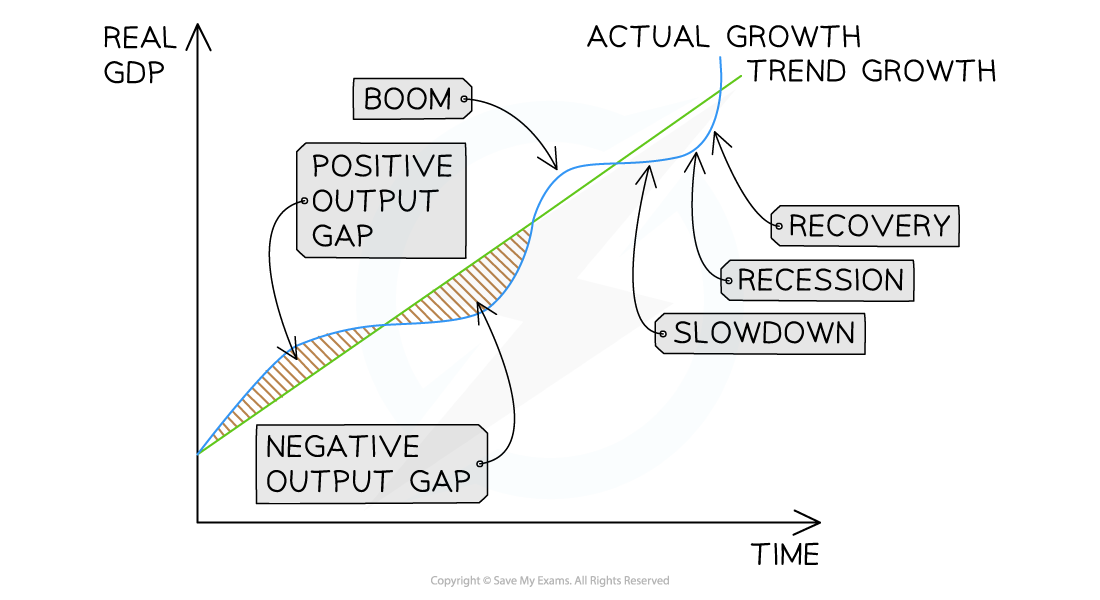The Business Cycle
- A business cycle refers to the changes in real GDP that occur in an economy over time
- This is the actual growth
- The real GDP will fluctuate above and below the long-term trend rate of growth
- There are four recognisable points in the cycle
- Peak/boom; slowdown/downturn; recession, recovery

The Business Cycle illustrates the fluctuations of real GDP (actual growth) around long-term trend growth
Diagram Analysis
- A positive output gap is identified as the growth of real GDP that is above the trend
- A negative output gap is identified as the growth of GDP that is below the trend
- There is often a natural flow through the different stages from boom to slowdown to recession to recovery
- This flow of real GDP can be moderated by government intervention
- E.g. increasing taxes in a boom period or increasing spending in a recession
- E.g. increasing taxes in a boom period or increasing spending in a recession
The Characteristics of a Boom and Recession
Characteristics of a Recession |
Characteristics of a Boom |
|
|
|
|
|
|
|
|
|
|
|
|
Exam Tip
You will often be examined on the characteristics of the trade cycle. Remember to demonstrate critical thinking around the assumptions of the model. For example, some firms may thrive during a recession as consumers switch to purchasing inferior goods (e.g. Lidl).
Additionally, the components of aggregate demand do not rise/fall at the same rate. For example, during recovery, consumption may increase well ahead of investment by firms.
An economy may also experience some fundamental restructuring during a prolonged recession and the composition of real GDP growth may be significantly different to what is was before the recession.